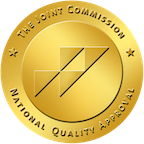Skip To Rehab Listing
Drug and Alcohol Treatment Facility Settings and Approaches
The large number of people who struggle with addiction in the Goochland area necessitate the presence of a variety of treatment centers, where clients can access the services they need in a convenient environment. These facilities include the following: outpatient day treatment, short term treatment facilities, outpatient detox centers, long term drug and alcohol rehab programs, inpatient drug abuse treatment.
These treatment programs provide a number of different modalities to addiction treatment, enabling clients to find an approach that works for them. People seeking treatment can find any of the recovery methods available in Goochland such as: trauma-related counseling, contingency management/motivational incentive, 12-step facilitation approach, matrix model, vocational rehabilitation services, cognitive/behavior therapy.
Special Programs for Addiction Recovery
In order to achieve sustainable recovery, individuals struggling with alcohol and drug abuse sometimes require tailored services designed for their unique circumstances. Goochland, VA. treatment programs provide many services including: self-help groups, substance abuse education, transgender or (LGBT) clients, programs for the hearing impaired, aftercare/continuing care, child care for clients children.
Patients can inquire about a center's programs and methods and get guidance in finding the right program for their needs.
Recovery Payment Alternatives
Drug and alcohol treatment programs also customize their payment options to suit the different economic needs of their patients. In general, patients have several payment options for their recovery, including the following: cash or self-payment, private health insurance, military insurance, payment assistance, other state funds, access to recovery (atr) voucher.
Those searching for rehab should not allow funds to be an obstacle. Treatment programs can walk them through their payment plans and help them find an affordable solution.
Thanks to Goochland's multiple choices for alcohol and drug rehab and payment, people looking for support can get a suitable, tailored, and affordable recovery program.
Commonly Asked Questions about Addiction and Treatment
How can society prevent teen substance abuse?
Preventing teen substance abuse requires a comprehensive, multifaceted approach that involves various sectors of society, including families, schools, communities, and the healthcare system. Here are some strategies that can be employed:
Education and Awareness: Schools and communities can provide education about the dangers of substance abuse, the nature of addiction, and the benefits of healthy lifestyle choices. This education should be accurate, age-appropriate, and engaging.
Family Engagement: Parents and caregivers play a critical role in prevention. They can talk openly with their children about substance abuse, set clear expectations around substance use, monitor their children's activities and friendships, and provide a supportive and nurturing environment.
Early Intervention: Early identification of risk factors for substance abuse (such as mental health issues, academic struggles, or behavioral problems) can allow for timely intervention. Healthcare providers, educators, and parents can all play a role in identifying and addressing these risk factors.
Access to Mental Health Services: Teens with mental health conditions are at a higher risk of substance abuse. Ensuring access to mental health services can help address these underlying issues and reduce the risk of substance abuse.
Healthy Activities: Providing teens with opportunities for healthy, engaging activities (like sports, arts, volunteering, etc.) can reduce boredom and stress, provide a sense of purpose and belonging, and offer positive alternatives to substance use.
Community Support: Communities can create environments that support healthy choices and discourage substance use. This can include things like enforcing age restrictions on the sale of alcohol and tobacco, providing safe and substance-free recreational opportunities for teens, and fostering a community culture that values health and wellbeing.
Substance Abuse Programs: Schools and communities can implement evidence-based substance abuse prevention programs. These programs can teach skills for resisting peer pressure, making healthy decisions, and coping with stress.
Policy Measures: Policies can be implemented that help prevent substance abuse, such as those that limit the advertising of alcohol and tobacco products, regulate the prescription of addictive medications, and support substance abuse prevention and treatment services.
Peer Support and Leadership: Peer-led initiatives can be very effective in preventing teen substance abuse. Teens may be more likely to listen to and be influenced by their peers. Peer leaders can model healthy behaviors, challenge norms around substance use, and provide support to their peers.
What happens when a person overdosed on fentanyl?
Fentanyl is a synthetic opioid that is 50 to 100 times more potent than morphine. It is used medically to treat severe pain, but its potent nature also makes it dangerous when misused or taken in excessive amounts. When a person overdoses on fentanyl, several life-threatening symptoms and complications can occur:
- Respiratory depression: One of the most critical effects of a fentanyl overdose is severe respiratory depression, which occurs when the drug suppresses the brain's ability to control breathing. This can lead to slow, shallow, or irregular breathing, or even cause the person to stop breathing altogether, which can be fatal.
- Unconsciousness: A fentanyl overdose can cause the person to lose consciousness or become unresponsive. In this state, the individual is at a higher risk of choking or suffering from positional asphyxia if they are in an awkward position that restricts their breathing.
- Constricted pupils: An overdose may result in pinpoint pupils, also known as miosis, which is a common sign of opioid intoxication.
- Cyanosis: Due to the lack of oxygen resulting from respiratory depression, the person's skin, lips, and nails may develop a bluish tint, which is called cyanosis.
- Low blood pressure: A fentanyl overdose can lead to a significant drop in blood pressure (hypotension), which may result in dizziness, fainting, or shock.
- Slow or weak pulse: The person's heart rate may become slow or weak, further contributing to the risk of life-threatening complications.
- Muscle rigidity: In some cases, a fentanyl overdose can cause muscle stiffness or rigidity, particularly in the chest and abdominal muscles, which can make it even more difficult to breathe.
- Seizures: Although less common, a fentanyl overdose may also cause seizures in some individuals.
- Coma or death: In severe cases, a fentanyl overdose can lead to coma or death due to respiratory failure, lack of oxygen, or other complications.
If you suspect someone is experiencing a fentanyl overdose, it is crucial to call emergency medical services immediately. Administering naloxone, an opioid antagonist, can temporarily reverse the effects of the overdose, but multiple doses may be needed due to fentanyl's potency. It is essential to note that naloxone is not a substitute for professional medical care, and the person must still receive prompt medical attention to address any underlying complications and ensure proper treatment.
What does drug withdrawal feel like?
Drug withdrawal is a complex process that can feel different for everyone, depending largely on the type of substance involved, the duration and intensity of use, and individual factors like overall health and genetic predisposition. However, some general experiences and symptoms are often associated with the withdrawal process:
Physical Symptoms: Many people experience physical discomfort or illness during withdrawal. Depending on the substance, this can range from flu-like symptoms (such as fever, chills, sweating, muscle aches, and fatigue) to more severe symptoms like seizures or hallucinations. Opioid withdrawal, for example, is often compared to a severe flu, while alcohol withdrawal can be life-threatening in severe cases.
Psychological Symptoms: Withdrawal can also involve psychological symptoms like anxiety, depression, mood swings, irritability, difficulty concentrating, and cravings for the substance. These can be just as challenging, if not more so, than the physical symptoms.
Sleep Disturbances: Insomnia is a common symptom of withdrawal from many substances, while vivid or disturbing dreams may occur when withdrawing from others.
Discomfort and Distress: Generally, withdrawal can be a very uncomfortable and distressing process. The body has become used to the presence of the substance, and it can react strongly when the substance is no longer available.
Cravings: One of the most challenging aspects of withdrawal for many people is the intense cravings for the substance. These cravings can be both physical and psychological, and they can be triggered by various factors, including stress, people, places, or things associated with substance use.













